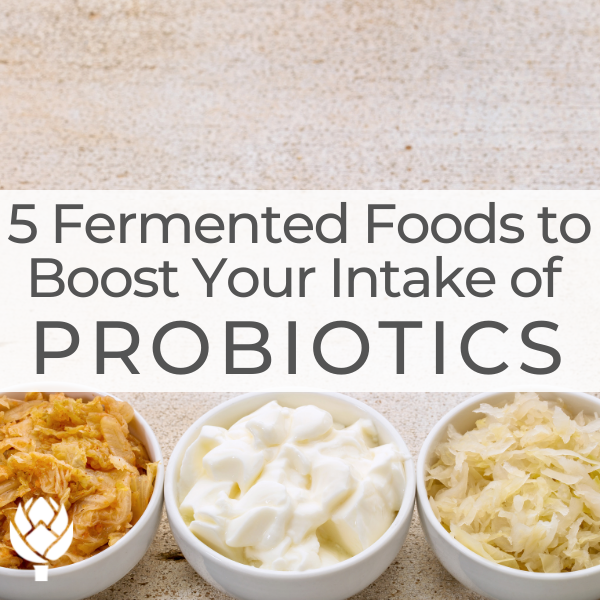Do you want to add a healthy and flavorful twist to your meals? Look no further than fermented foods! Cooking with fermented foods not only enhances the taste of your dishes but also provides numerous health benefits. In this comprehensive guide, we’ll explore the fascinating world of fermented foods and learn how to incorporate them into your culinary repertoire.
Understanding Fermented Foods
Fermented foods are created through the process of lacto-fermentation, which involves the natural conversion of sugars and carbohydrates in the food into lactic acid by beneficial bacteria. This process not only preserves the food but also enhances its nutritional value by increasing the levels of vitamins, enzymes, and probiotics.
From tangy sauerkraut and kimchi to zesty pickles and kefir, the world of fermented foods is vast and diverse. Each type of fermentation produces unique flavors and textures, offering a wide range of options for culinary experimentation.
Getting Started: Essential Ingredients and Equipment
Before diving into the world of cooking with fermented foods, it’s important to gather the necessary ingredients and equipment:
| Ingredients | Equipment |
|---|---|
| – Fresh vegetables | – Fermentation crock or jar |
| – Sea salt or kosher salt | – Weights or fermentation lid |
| – Water | – Airtight storage containers |
| – Starter culture or whey (optional) | – Sharp knife and cutting board |
| – Spices and herbs | – Mixing bowls |
Basic Preparation and Cooking Techniques
Once you have your ingredients and equipment ready, it’s time to start cooking with fermented foods. Here are some basic steps and techniques to get you started:
1. Preparing The Vegetables
Wash and chop the vegetables of your choice. It’s important to use fresh, high-quality produce to ensure the best flavor and texture in your fermented dishes.
2. Brining Or Salting
Prepare a brine solution using salt and water, and immerse the vegetables in the brine. This process helps to create an environment conducive to the growth of beneficial bacteria while inhibiting the growth of harmful microbes.
3. Fermentation
Transfer the vegetables and brine into a fermentation crock or jar, ensuring that the vegetables are fully submerged in the brine. Add any desired spices, herbs, or starter cultures to enhance the flavor of the ferment.
4. Fermentation Time And Storage
Allow the vegetables to ferment at room temperature for a designated period, typically ranging from a few days to several weeks, depending on the recipe and desired flavor profile. Once the fermentation is complete, store the fermented food in airtight containers in the refrigerator to slow down the fermentation process.

Credit: www.facebook.com
Delicious Recipes to Try
Now that you’re equipped with the essential knowledge and techniques for cooking with fermented foods, it’s time to explore some delicious recipes. Here are a few popular fermented dishes to inspire your culinary creativity:
- Sauerkraut: A classic fermented cabbage dish with a tangy flavor that pairs well with sandwiches, salads, and sausages.
- Kimchi: A staple of Korean cuisine, kimchi is a spicy, fermented vegetable medley that adds a kick to rice dishes, noodles, and stir-fries.
- Pickles: Whether you prefer dill, sweet, or spicy pickles, these crunchy and tangy treats make a perfect accompaniment to sandwiches and burgers.
- Kombucha: This effervescent, fermented tea beverage comes in a variety of flavors and offers a refreshing alternative to sugary sodas.
- Yogurt: Homemade yogurt made from fermented milk provides a creamy and versatile base for breakfast parfaits, smoothies, and savory sauces.
Health Benefits of Fermented Foods
In addition to their delightful flavors, fermented foods offer a myriad of health benefits. The natural fermentation process enhances the digestibility and nutrient absorption of foods, while also promoting gut health by introducing beneficial probiotics into the digestive system.
Furthermore, fermented foods are rich in vitamins, enzymes, and organic acids that support overall well-being and boost the immune system. Incorporating fermented foods into your diet can aid in digestion, reduce inflammation, and contribute to a balanced and resilient microbiome.

Credit: jasemedical.com
The Final Note on Cooking with Fermented Foods
Cooking with fermented foods is a rewarding journey that not only enriches your culinary creations but also enhances your health and well-being. With a wealth of delicious recipes and the right techniques at your disposal, you can elevate your cooking to a whole new level. Embrace the art of fermentation, and savor the transformative power of flavorful and nourishing fermented foods in your kitchen.
Frequently Asked Questions On How To Cook Fermented Foods: Unlock The Power Of Probiotics!
How Long Does It Take To Ferment Foods?
Fermentation times can vary depending on the type of food being fermented and the specific recipe. On average, fermentation takes anywhere from a few days to several weeks.
What Are The Health Benefits Of Eating Fermented Foods?
Fermented foods are rich in probiotics, which promote a healthy gut microbiome, support digestion, and boost the immune system. They also enhance nutrient absorption and may improve mental health.
Can I Ferment Foods Without Using Salt?
While salt is commonly used in fermentation to control the growth of unwanted bacteria, you can experiment with salt alternatives like whey, vegetable brines, or fermentation starters. However, keep in mind that salt plays a crucial role in fermentation and affects flavor and texture.
How Do I Know If My Fermented Food Has Gone Bad?
Check for any signs of mold, unusual odors, or slimy texture. If your fermented food exhibits any of these characteristics, it is best to discard it to prevent any potential foodborne illnesses.
